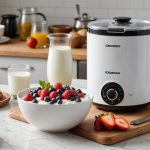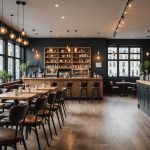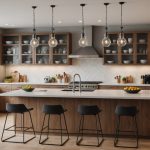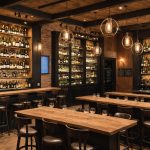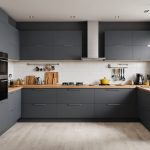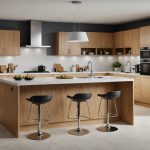Understanding Café Design Principles
Café design is a compelling blend of aesthetic appeal and practical functionality. At the heart of café design principles is the task of merging these two aspects to create a space that is both visually engaging and efficiently usable. While aesthetics captivate visitors immediately, functionality ensures that both staff and customers enjoy a seamless experience.
An effective café layout can enhance the overall atmosphere significantly. A well-thought-out design addresses everything from seating arrangements to the efficient use of space. The goal is to cultivate a welcoming atmosphere that encourages patrons to linger, indulge, and return.
This might interest you : Unlocking social media success: innovative tactics for bars to enhance event visibility and promote special offers
Balancing aesthetics with functionality requires a thoughtful approach. Employing visually appealing elements that also serve a purpose is essential. For instance, integrating modular pieces can meet both stylistic and practical needs.
Ultimately, a café’s design should reflect its brand ethos while providing an enjoyable experience for all. Incorporating community contributions or thematic art can personalize the space further, linking design with local culture. This ensures that patrons feel valued within the environment crafted uniquely for them.
In parallel : Building a sustainable tomorrow: innovative approaches for bars to source eco-friendly spirits and wines
Planning Café Layout
When designing a café layout, achieving harmony between openness and segmentation is crucial. Open layouts encourage social interaction, making them ideal for large groups, while segmented spaces offer intimate nooks perfect for solitary patrons or small gatherings. Striking the right balance between these layout styles can help cultivate a versatile environment that meets diverse customer needs.
Seating arrangements play a significant role in guiding customer flow. For instance, placing tables along walls maximizes the central space and allows staff to move efficiently through service lanes. Round tables can facilitate conversation in social setups, while booths offer privacy. Prioritising flexible seating styles, such as movable chairs and tables, can help easily modify the space based on varying customer volumes.
To enhance space optimization, consider both diners and staff needs. Efficient layout planning should focus on simplifying the movement from the kitchen to the serving area, minimizing unnecessary steps for staff. Installing compact furniture not only saves space but also contributes to an unobtrusive atmosphere. By carefully planning the café layout, owners can ensure a seamless experience that fosters an inviting ambiance for patrons and an efficient operational flow for staff.
Choosing Color Schemes
Creating the right café ambiance is significantly influenced by the color schemes chosen. Colours have psychological effects; for instance, warm tones like red and orange can foster a cosy, inviting feel, promoting longer visits and relaxed conversations among patrons. Conversely, cooler tones, such as blues and greens, can evoke calmness and serenity, possibly appealing to customers seeking a quiet sanctuary.
Selecting a cohesive colour palette that aligns with the café’s brand and target audience is critical. Consider colours that not only project the café’s personality but also complement its aesthetic appeal. For feedback, you could present different palettes to groups familiar with your brand ethos to ensure choices resonate well with the intended clientele.
Case studies offer valuable insights, highlighting successful cafés and their adept use of color. For example, a popular urban café might utilise earthy tones to harmonise with its sustainable brand image. Similarly, a seaside-themed café could employ pastel blues and whites to mirror its nautical concept. Such thoughtful selection of color schemes can significantly enhance the overall customer experience by immersing patrons in the desired atmosphere.
Lighting Design Strategies
Incorporating thoughtful lighting design can significantly enhance the ambiance of a café. The integration of various types of lighting is essential in creating an environment that shifts seamlessly between different times of day. Natural light is a boon, serving to elevate the mood while cutting down energy costs. Beckoning sunlight into the space can be achieved through strategic placement of windows or skylights.
In scenarios where natural light is limited, artificial lighting solutions take centre stage. Employing layered lighting techniques can create depth and interest. For instance, ambient lighting provides general illumination, while accent lights can highlight decor or specific areas such as artwork or display counters. Task lighting, on the other hand, can facilitate functional operations, ensuring areas like the service counter remain adequately lit.
Strategically designed lighting schemes can transform a café’s atmosphere, shifting it from a vibrant, lively morning hub to a cosy evening retreat. Careful calibration of intensity and positioning enables owners to tailor the environment to the customer’s experience. By mastering these elements, a café becomes more than just a dining space, but an inviting sanctuary to relax and enjoy.
Workflow Efficiency and Functionality
Enhancing workflow efficiency within a café setting is crucial for ensuring a seamless operational flow. A well-designed café layout is essential to foster smooth interactions between the kitchen and the service areas. By strategically arranging the prep stations and service counters, staff can quickly serve customers without unnecessary delays.
The café’s functionality directly impacts both staff performance and customer satisfaction. For instance, placing the coffee station near the entrance can speed up service for takeaway orders, while a centrally located dishwashing area saves time in reusing tableware. Aligning the seating to not obstruct service lanes enhances operational flow, ensuring servers can move freely without disturbing diners.
Examples of functional café designs that prioritize workflow include incorporating wide walkways and intelligently positioned storage solutions. Such features enable efficient restocking and cleaning, contributing to smooth service. Cafés that excel in workflow efficiency often see higher customer satisfaction, as orders arrive promptly and staff appear less frazzled. This balance leads to a harmonious environment where patrons can enjoy their experience and staff can work effectively, illustrating the vital relationship between careful design and operational success.
Integrating Décor and Branding
Creating a distinct visual identity through café décor is key to establishing a memorable experience. Thoughtfully designed interiors help reinforce the café’s branding, making it a standout destination. By incorporating elements that align with the brand ethos, a coherent identity is forged, allowing the café to resonate with its target audience.
To define your brand, first consider your core values and message. Communicate these through the design language, such as using rustic wood finishes to signal a sustainable focus or vibrant murals for an energetic vibe. Thoughtful touches like vintage crockery or bespoke furniture can encapsulate a narrative unique to your café.
Incorporating art and leveraging community contributions enhances the connection between the café and its locale. This approach not only supports local artists but also imbues the space with a personal touch reflective of regional culture. Encourage local partnerships, such as showcasing community art or featuring local products.
Successful integration of these elements ensures patrons are enveloped in a unique ambiance. This, in turn, increases customer loyalty as they appreciate the meaningful connection and aesthetically unified experience your space provides.
Successful Café Case Studies
Exploring successful cafés provides powerful insights to inspire your own café design. Let’s look at profiles of renowned cafés revered for their innovative approaches. These real-world examples showcase how a well-balanced blend of aesthetic appeal and functional space can create standout environments.
-
Café Two Squared is celebrated for its modular furniture, which optimizes its layout for both open gatherings and more secluded experiences. Such design ingenuity enhances customer experience by offering flexible seating arrangements, maximizing available space.
-
Next, Color Palette Café leverages an exceptional color scheme. By incorporating soothing blues and greens, it captivates patrons, creating a serene environment. These hues are thoughtfully selected to align with the café’s tranquil brand ethos.
-
Finally, Light & Shade exemplifies exemplary lighting design. The strategic placement of windows invites ample natural light, augmented by ambient and accent lights that create dynamic ambiances throughout the day.
These successful cafés illustrate practical examples of café design principles yielding compelling spaces. By analysing these approaches, new café ventures can extract valuable design inspiration and aspire to craft distinguished café environments.

